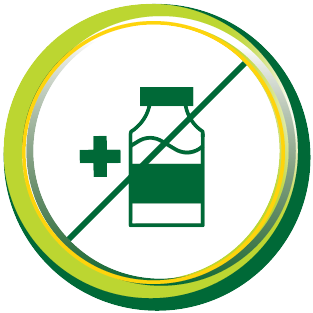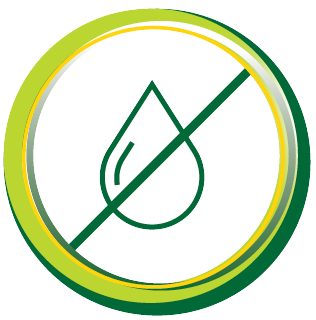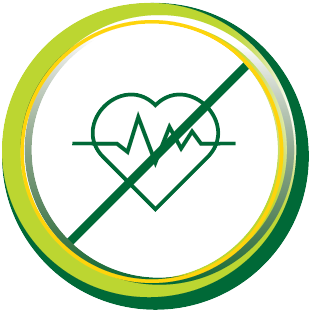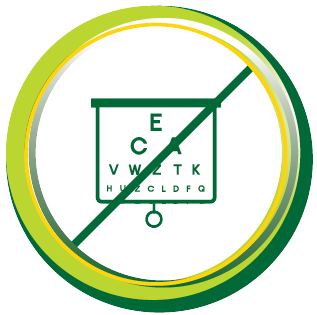
For US Healthcare Professionals

Grade 1 or 21 ORSERDU demonstrated a manageable safety profile1
ADVERSE REACTIONS (≥10%) IN PATIENTS IN EMERALD1*
|
ORSERDU (n=237) |
Fulvestrant or AI† (n=230) |
|||
|
ARs |
All grades (%) |
Grade 3/4‡ (%) |
All grades (%) |
Grade 3/4‡ (%) |
|
Musculoskeletal and connective tissue disorders |
||||
|
Musculoskeletal pain§ |
41 |
7 |
39 |
1 |
|
Gastrointestinal disorders |
||||
|
Nausea |
35 |
2.5 |
19 |
0.9 |
|
Vomiting§ |
19 |
0.8 |
9 |
0 |
|
Diarrhea |
13 |
0 |
10 |
1 |
|
Constipation |
12 |
0 |
6 |
0 |
|
Abdominal pain§ |
11 |
1 |
10 |
0.9 |
|
Dyspepsia |
10 |
0 |
2.6 |
0 |
|
General disorders |
||||
|
Fatigue§ |
26 |
2 |
27 |
1 |
|
Metabolism and nutrition disorders |
||||
|
Decreased appetite |
15 |
0.8 |
10 |
0.4 |
|
Nervous system |
||||
|
Headache |
12 |
2 |
12 |
0 |
|
Vascular disorders |
||||
|
Hot flush |
11 |
0 |
8 |
0 |
94%
of patients stayed on ORSERDU without discontinuing treatment due to ARs1II
-
Serious ARs occurred in 12% of patients who received ORSERDU1
- Serious ARs in >1% of patients who received ORSERDU were musculoskeletal pain (1.7%) and nausea (1.3%)1
-
Fatal ARs occurred in 1.7% of patients who received ORSERDU vs 2.6% of patients who received fulvestrant or AI2¶
-
No patients in either treatment arm had sinus bradycardia3
Low discontinuation rate due to ARs: 6%1
Low dose reductions due to ARs: 3%1
Low dose interruptions due to ARs: 15%1
AI, aromatase inhibitor; ARs, adverse reactions; NCI CTCAE, National Cancer Institute Common Terminology Criteria for Adverse Events.
*Adverse reactions were graded using NCI CTCAE version 5.0.1 †AI therapy included anastrozole, letrozole or exemestane.1 ‡Only includes grade 3 ARs.1 §Includes other related terms.1 ||ARs that resulted in permanent discontinuation of ORSERDU in >1% of patients were musculoskeletal pain (1.7%) and nausea (1.3%).1 ¶Fatal ARs included cardiac arrest, septic shock, diverticulitis, and unknown cause (1 patient each).1
SELECT LABORATORY ABNORMALITIES (≥10%) THAT WORSENED FROM BASELINE IN EMERALD1*
|
ORSERDU* |
Fulvestrant or AI*† |
|||
|
ORSERDU |
All grades (%) |
Grade 3/4 (%) |
All grades (%) |
Grade 3/4 (%) |
|
Chemistry |
||||
|
Cholesterol increased |
30 |
1 |
17 |
0 |
|
AST increased |
29 |
0 |
34 |
1 |
|
Triglycerides increased |
27 |
2 |
15 |
1 |
|
ALT increased |
17 |
0 |
24 |
1 |
|
Sodium decreased |
16 |
1 |
15 |
0 |
|
Creatinine increased |
16 |
0 |
6 |
0 |
|
Hematology |
||||
|
Hemoglobin decreased |
26 |
1 |
20 |
2 |
*The denominator used to calculate the rate varied from 29 to 236 for ORSERDU and from 37 to 225 for fulvestrant or AI based on the number of patients with a baseline value and at least 1 post-treatment value.1 †AI therapy included anastrozole, letrozole or exemestane.1
Monitor lipid profile prior to starting and periodically while taking ORSERDU1
NOT REQUIRED IN PI1

No concomitant or prophylactic medications

No monitoring blood glucose levels prior to or during treatment

No ECGs or monitoring QTcF intervals

No baseline or periodic eye exams
AI, aromatase inhibitor; ALT, alanine aminotransferase; AST, aspartate aminotransferase; ECG, electrocardiogram; PI, prescribing information; QTcF, QT interval corrected by Fridericia’s formula.
Learn more about MoD & MoA
IMPORTANT SAFETY INFORMATION
Warnings and Precautions
-
Dyslipidemia: Hypercholesterolemia and hypertriglyceridemia occurred in patients taking ORSERDU at an incidence of 30% and 27%, respectively. The incidence of Grade 3 and 4 hypercholesterolemia and hypertriglyceridemia were 0.9% and 2.2%, respectively. Monitor lipid profile prior to starting and periodically while taking ORSERDU.
-
Embryo-Fetal Toxicity: Based on findings in animals and its mechanism of action, ORSERDU can cause fetal harm when administered to a pregnant woman. Advise pregnant women and females of reproductive potential of the potential risk to a fetus. Advise females of reproductive potential to use effective contraception during treatment with ORSERDU and for 1 week after the last dose. Advise male patients with female partners of reproductive potential to use effective contraception during treatment with ORSERDU and for 1 week after the last dose.
Adverse Reactions
-
Serious adverse reactions occurred in 12% of patients who received ORSERDU. Serious adverse reactions in >1% of patients who received ORSERDU were musculoskeletal pain (1.7%) and nausea (1.3%). Fatal adverse reactions occurred in 1.7% of patients who received ORSERDU, including cardiac arrest, septic shock, diverticulitis, and unknown cause (one patient each).
-
The most common adverse reactions (≥10%), including laboratory abnormalities, of ORSERDU were musculoskeletal pain (41%), nausea (35%), increased cholesterol (30%), increased AST (29%), increased triglycerides (27%), fatigue (26%), decreased hemoglobin (26%), vomiting (19%), increased ALT (17%), decreased sodium (16%), increased creatinine (16%), decreased appetite (15%), diarrhea (13%), headache (12%), constipation (12%), abdominal pain (11%), hot flush (11%), and dyspepsia (10%).
Drug Interactions
-
Concomitant use with CYP3A4 inducers and/or inhibitors: Avoid concomitant use of strong or moderate CYP3A4 inhibitors with ORSERDU. Avoid concomitant use of strong or moderate CYP3A4 inducers with ORSERDU.
Use in Specific Populations
-
Lactation: Advise lactating women to not breastfeed during treatment with ORSERDU and for 1 week after the last dose.
-
Hepatic Impairment: Avoid use of ORSERDU in patients with severe hepatic impairment (Child-Pugh C). Reduce the dose of ORSERDU in patients with moderate hepatic impairment (Child-Pugh B).
The safety and effectiveness of ORSERDU in pediatric patients have not been established.
ORSERDU is available as 345 mg tablets and 86 mg tablets.
INDICATION
ORSERDU (elacestrant) is indicated for the treatment of postmenopausal women or adult men with estrogen receptor (ER)-positive, human epidermal growth factor receptor 2 (HER2)-negative, ESR1-mutated advanced or metastatic breast cancer with disease progression following at least one line of endocrine therapy.
To report SUSPECTED ADVERSE REACTIONS, contact Stemline Therapeutics, Inc. at 1-877-332-7961 or FDA at 1-800-FDA-1088 or www.fda.gov/medwatch.
Please see full Prescribing Information.
References: 1. ORSERDU [prescribing information]. New York, NY: Stemline Therapeutics, Inc., a Menarini Group Company, 2023. 2. Bidard FC, Kaklamani VG, Neven P, et al. Elacestrant (oral selective estrogen receptor degrader) versus standard endocrine therapy for estrogen receptor–positive, human epidermal growth factor receptor 2–negative advanced breast cancer: results from the randomized phase III EMERALD trial. J Clin Oncol. 2022;40(28):3246-3256. 3. Data on file. Stemline Therapeutics, Inc., a Menarini Group Company.
This site is intended only for US healthcare professionals. The products discussed in this site may have different product labeling in different countries. The information provided is for educational purposes only.
ORSERDU is a registered trademark of the Menarini Group.
© 2025 Stemline Therapeutics, Inc., a Menarini Group Company. All rights reserved. 05/25 MAT-US-ELA-00796
|
IMPORTANT SAFETY INFORMATION
+
Warnings and Precautions
-
Dyslipidemia: Hypercholesterolemia and hypertriglyceridemia occurred in patients taking ORSERDU at an incidence of 30% and 27%, respectively. The incidence of Grade 3 and 4 hypercholesterolemia and hypertriglyceridemia were 0.9% and 2.2%, respectively. Monitor lipid profile prior to starting and periodically while taking ORSERDU.
-
Embryo-Fetal Toxicity: Based on findings in animals and its mechanism of action, ORSERDU can cause fetal harm when administered to a pregnant woman. Advise pregnant women and females of reproductive potential of the potential risk to a fetus. Advise females of reproductive potential to use effective contraception during treatment with ORSERDU and for 1 week after the last dose. Advise male patients with female partners of reproductive potential to use effective contraception during treatment with ORSERDU and for 1 week after the last dose.
Adverse Reactions
-
Serious adverse reactions occurred in 12% of patients who received ORSERDU. Serious adverse reactions in >1% of patients who received ORSERDU were musculoskeletal pain (1.7%) and nausea (1.3%). Fatal adverse reactions occurred in 1.7% of patients who received ORSERDU, including cardiac arrest, septic shock, diverticulitis, and unknown cause (one patient each).
-
The most common adverse reactions (≥10%), including laboratory abnormalities, of ORSERDU were musculoskeletal pain (41%), nausea (35%), increased cholesterol (30%), increased AST (29%), increased triglycerides (27%), fatigue (26%), decreased hemoglobin (26%), vomiting (19%), increased ALT (17%), decreased sodium (16%), increased creatinine (16%), decreased appetite (15%), diarrhea (13%), headache (12%), constipation (12%), abdominal pain (11%), hot flush (11%), and dyspepsia (10%).
Drug Interactions
-
Concomitant use with CYP3A4 inducers and/or inhibitors: Avoid concomitant use of strong or moderate CYP3A4 inhibitors with ORSERDU. Avoid concomitant use of strong or moderate CYP3A4 inducers with ORSERDU.
Use in Specific Populations
-
Lactation: Advise lactating women to not breastfeed during treatment with ORSERDU and for 1 week after the last dose.
-
Hepatic Impairment: Avoid use of ORSERDU in patients with severe hepatic impairment (Child-Pugh C). Reduce the dose of ORSERDU in patients with moderate hepatic impairment (Child-Pugh B).
The safety and effectiveness of ORSERDU in pediatric patients have not been established.
ORSERDU is available as 345 mg tablets and 86 mg tablets.
INDICATION
ORSERDU (elacestrant) is indicated for the treatment of postmenopausal women or adult men with estrogen receptor (ER)-positive, human epidermal growth factor receptor 2 (HER2)-negative, ESR1-mutated advanced or metastatic breast cancer with disease progression following at least one line of endocrine therapy.
To report SUSPECTED ADVERSE REACTIONS, contact Stemline Therapeutics, Inc. at 1-877-332-7961 or FDA at 1-800-FDA-1088 or www.fda.gov/medwatch.
Please see full Prescribing Information.
References: 1. ORSERDU [prescribing information]. New York, NY: Stemline Therapeutics, Inc., a Menarini Group Company, 2023. 2. Bidard FC, Kaklamani VG, Neven P, et al. Elacestrant (oral selective estrogen receptor degrader) versus standard endocrine therapy for estrogen receptor–positive, human epidermal growth factor receptor 2–negative advanced breast cancer: results from the randomized phase III EMERALD trial. J Clin Oncol. 2022;40(28):3246-3256. 3. Data on file. Stemline Therapeutics, Inc., a Menarini Group Company.

